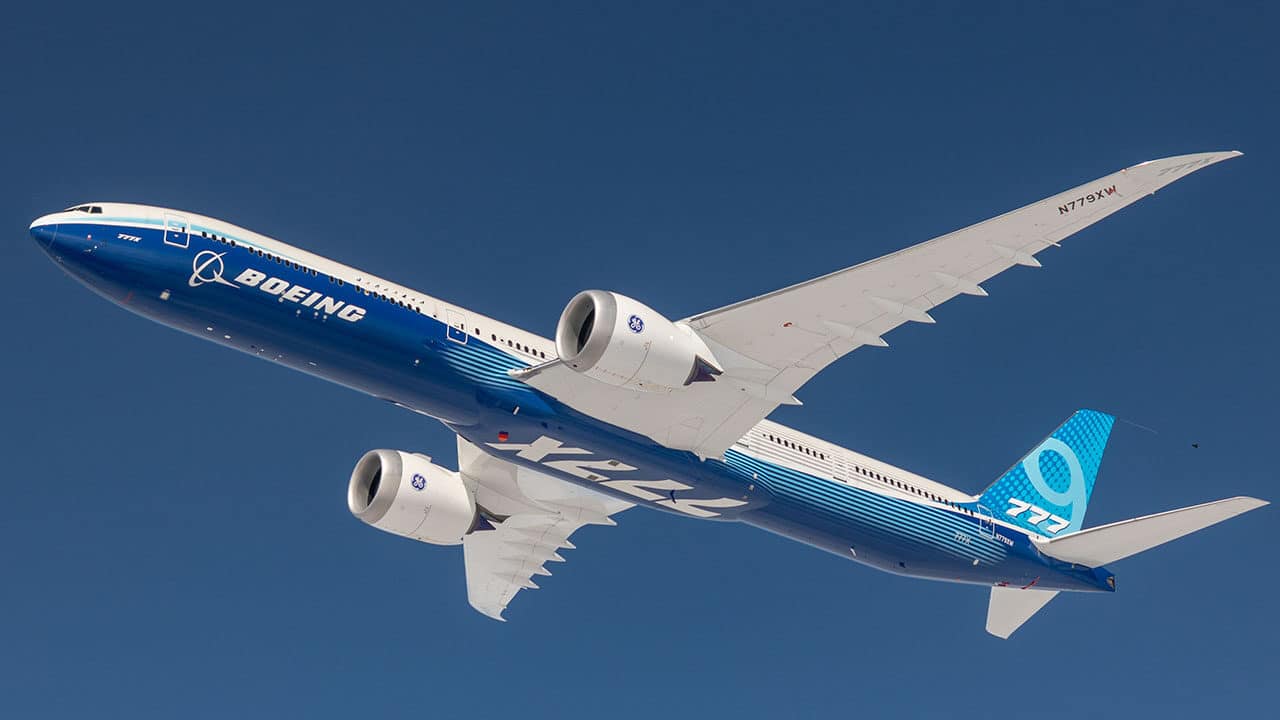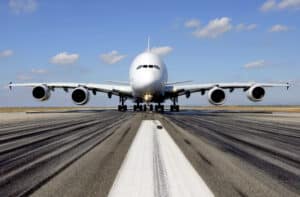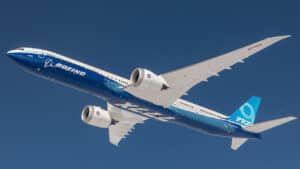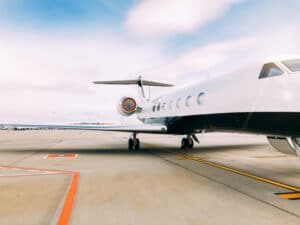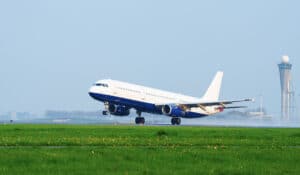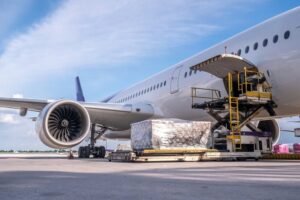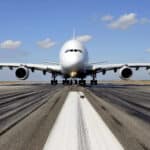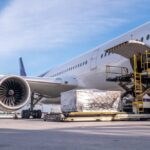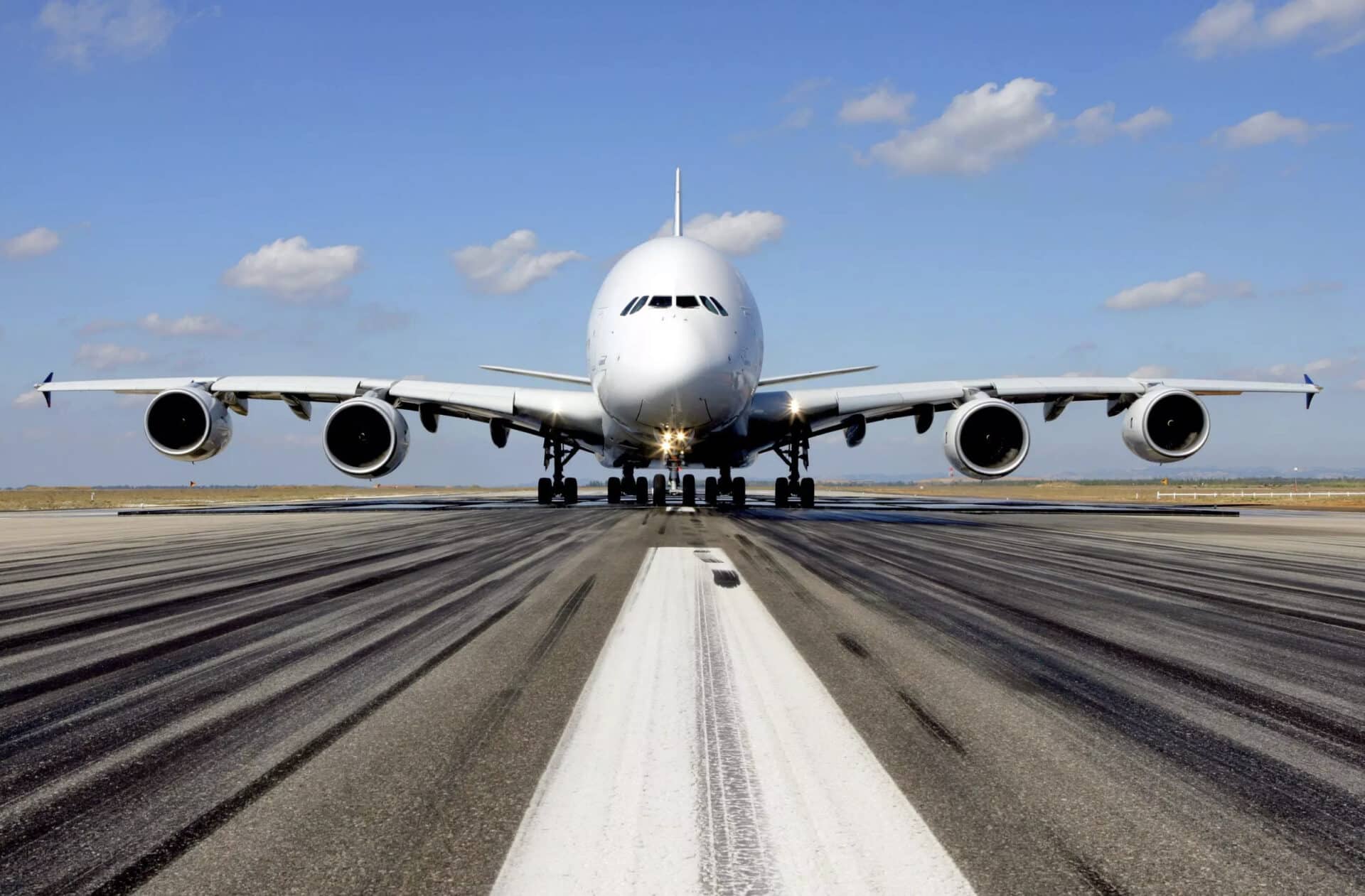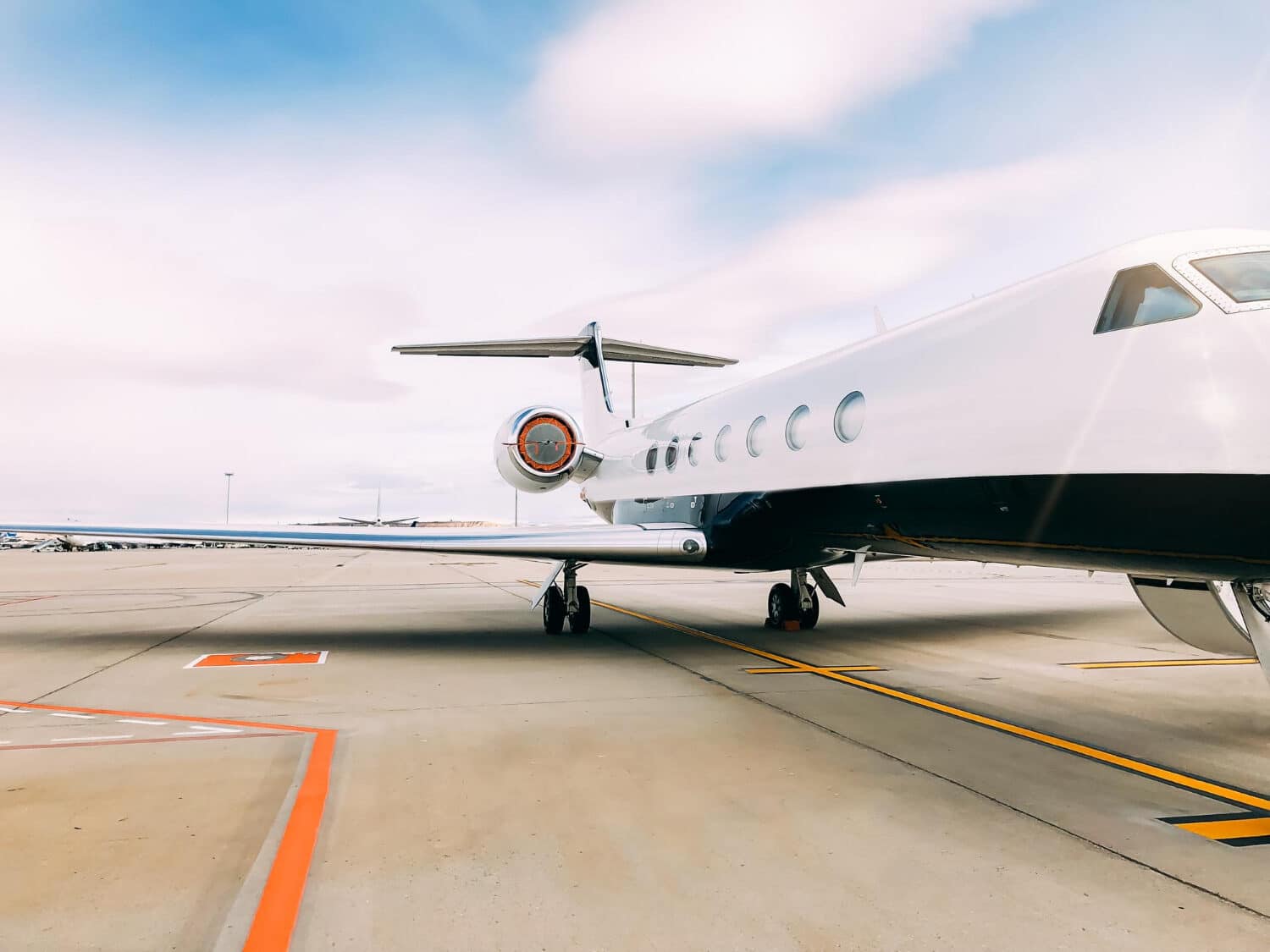Here’s the deal. Boeing aircraft have been the backbone of commercial aviation for decades. But 2025 tells a complicated story.
The company delivered 493 aircraft through October 2025, already surpassing its entire 2024 total of 348. Production is recovering. The 737 MAX assembly lines are stable at 38 aircraft per month. The FAA lifted production caps in October.
But Boeing is playing catch-up. The 737 MAX grounding. The 787 quality issues. The 777X delays. Years of problems created a backlog of 6,527 unfilled orders waiting for delivery.
This guide breaks down every Boeing commercial aircraft flying today and what’s coming next. Whether you’re planning fleet acquisitions, evaluating widebody options, or comparing against Airbus aircraft models, you’ll find the specs and operational insights here.
Boeing Aircraft Families at a Glance
Boeing currently produces three main commercial aircraft families with a fourth on the way.
| Aircraft Family | Type | Passengers | Range | Status |
|---|---|---|---|---|
| 737 MAX | Single-aisle | 138-230 | 3,300-3,850 nm | In production |
| 787 Dreamliner | Widebody | 242-336 | 6,330-7,635 nm | In production |
| 777/777F | Widebody | 301-396 | 5,845-8,555 nm | Production ending 2027 |
| 777X | Widebody | 384-426 | 7,285-8,745 nm | Certification 2027 |
| 767 | Widebody | Freighter only | 3,255 nm | Production ending 2027 |
Let’s look at each family and what operators need to know.
737 MAX Family
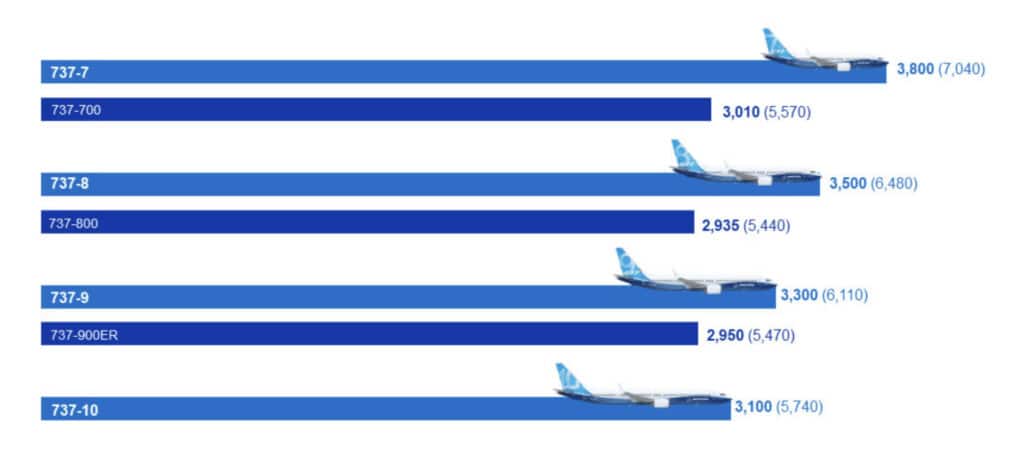
Truth is, the 737 MAX has been through hell. Two fatal crashes. A worldwide grounding. An FAA production cap. A door plug incident.
But the aircraft keeps selling.
As of October 2025, Boeing delivered 2,044 737 MAX aircraft and holds orders for 4,770 more. The MAX 8 dominates the order book. Airlines from Ryanair to United to Southwest keep coming back for more.
The “MAX” designation means new CFM LEAP-1B engines bolted onto an updated 737 airframe. Fuel burn drops 20% compared to the previous generation. The split-tip winglets squeeze out additional efficiency.
Here’s what you need to know. An FAA production cap limited Boeing to 38 aircraft per month after the Alaska Airlines door plug incident in January 2024. That cap lifted in October 2025, allowing production to increase to 42 aircraft per month.
According to Boeing official specifications, the 737 MAX maintains 95% parts commonality across variants. Pilots type-rated on one MAX variant fly them all.
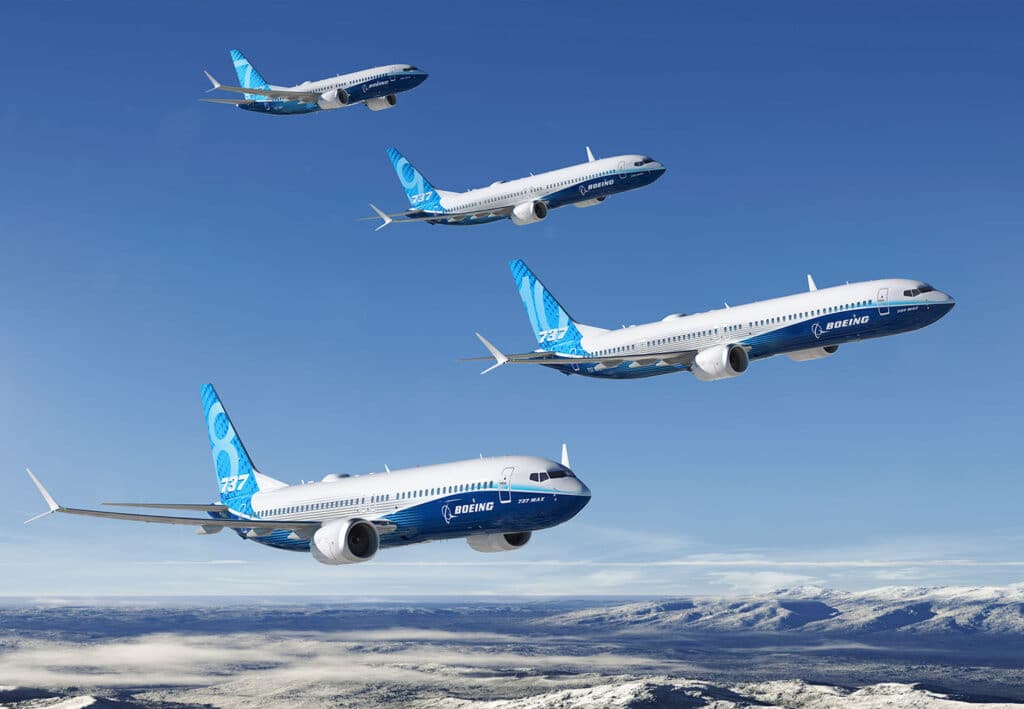
737 MAX 7
The smallest variant. Seats 138-172 passengers with 3,850 nautical miles of range.
Here’s the problem. Certification is stuck. An engine anti-ice system issue pushed FAA approval into 2026. Southwest Airlines, the launch customer, is waiting.
737 MAX 8
The workhorse. 162-189 passengers. 3,500 nautical miles of range.
This variant accounts for the vast majority of MAX deliveries. Ryanair operates a fleet of MAX 8-200s with high-density seating. The economics work on short-haul routes where fuel efficiency drives profitability.
737 MAX 9
The mid-stretch variant. 178-220 passengers. 3,515 nautical miles of range.
Orders have been weak. The MAX 9 represents less than 4% of the total 737 MAX backlog. Most operators choose either the MAX 8 or jump to the MAX 10 for maximum capacity.
737 MAX 10
The stretched variant seats 188-230 passengers with 3,300 nautical miles of range.
Like the MAX 7, certification is stuck behind the same engine anti-ice issue. Boeing expects approval in 2026. United Airlines, American Airlines, and Delta all have significant orders waiting.
For a detailed comparison with the competing Airbus narrowbody, see our A321neo vs 737 MAX 9 analysis.
| 737 MAX Model | Length | Passengers | Range | Fuel Savings |
|---|---|---|---|---|
| MAX 7 | 35.6 m | 138-172 | 3,850 nm | 20% |
| MAX 8 | 39.5 m | 162-189 | 3,500 nm | 20% |
| MAX 9 | 42.1 m | 178-220 | 3,515 nm | 20% |
| MAX 10 | 43.8 m | 188-230 | 3,300 nm | 20% |
Boeing wants to produce 52 737 MAX aircraft per month as a long-term target. The path there requires six-month intervals between each production increase of five aircraft. Realistically, that target arrives between 2027 and 2028.
787 Dreamliner Family
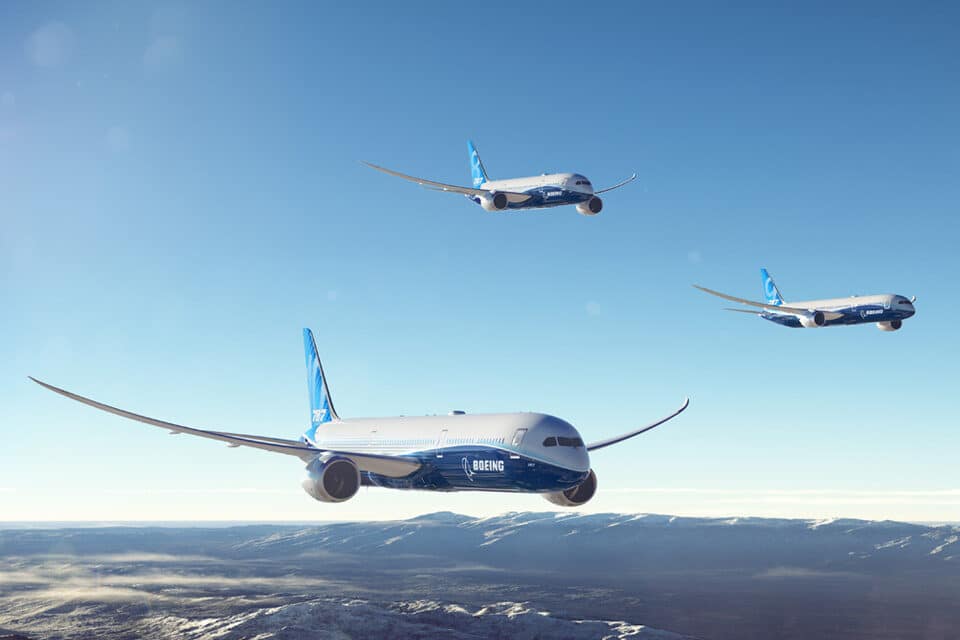
The 787 changed how airlines think about widebody routes. Carbon fiber reinforced polymer makes up over 50% of the airframe. The airplane weighs less. It burns 20% less fuel than the 767 it replaced.
That efficiency opened routes that couldn’t exist before.
Since entering service in 2011, the Dreamliner has flown more than 1 billion passengers and opened 425 new nonstop routes globally. Perth to London. Auckland to New York. Melbourne to Dallas. These ultra-long-haul city pairs work because the 787 burns fuel efficiently enough to make the economics work.
As of October 2025, Boeing received 2,277 orders and delivered 1,229 Dreamliners. The backlog of over 1,000 aircraft supports years of production.
Here’s the reality check. The 787’s perfect safety record ended in June 2025. Air India Flight 171, a 787-8 bound for London, crashed shortly after takeoff from Ahmedabad. 260 people died. The preliminary investigation found both engine fuel control switches moved to CUTOFF three seconds after takeoff. The investigation continues, but initial findings pointed to no fault in the aircraft or engines.
For operators evaluating competing widebodies, we covered the head-to-head battle in our Boeing 787 vs Airbus A350 comparison.
787-8
The original variant. Seats 242 passengers in typical configuration with 7,355 nautical miles of range.
This is the smallest Dreamliner. Airlines use it on thinner long-haul routes where the 787-9 would fly with too many empty seats.
787-9
The stretched version. 296 passengers with 7,635 nautical miles of range.
This is the volume seller. The 787-9 accounts for more than three times the orders of the 787-10. The balance of capacity and range hits the sweet spot for most long-haul operations.
Only three airlines operate all three Dreamliner variants: All Nippon Airways, British Airways, and United Airlines. Air Canada will join them when 787-10 deliveries begin.
787-10
The big stretch. 336 passengers over 6,330 nautical miles.
Boeing prioritized capacity over range with this variant. The shorter legs limit route flexibility, but operating economics on medium-haul sectors are hard to beat.
Singapore Airlines launched the variant in March 2018.
| 787 Model | Length | Passengers | Range | Engines |
|---|---|---|---|---|
| 787-8 | 57 m | 242 | 7,355 nm | GEnx-1B or Trent 1000 |
| 787-9 | 63 m | 296 | 7,635 nm | GEnx-1B or Trent 1000 |
| 787-10 | 68 m | 336 | 6,330 nm | GEnx-1B or Trent 1000 |
Boeing produced 7 Dreamliners per month through 2025. The target is 8 per month by year-end and 10 per month in 2026. The company broke ground on a $1 billion expansion at its South Carolina facility to support the production increase.
777 Family
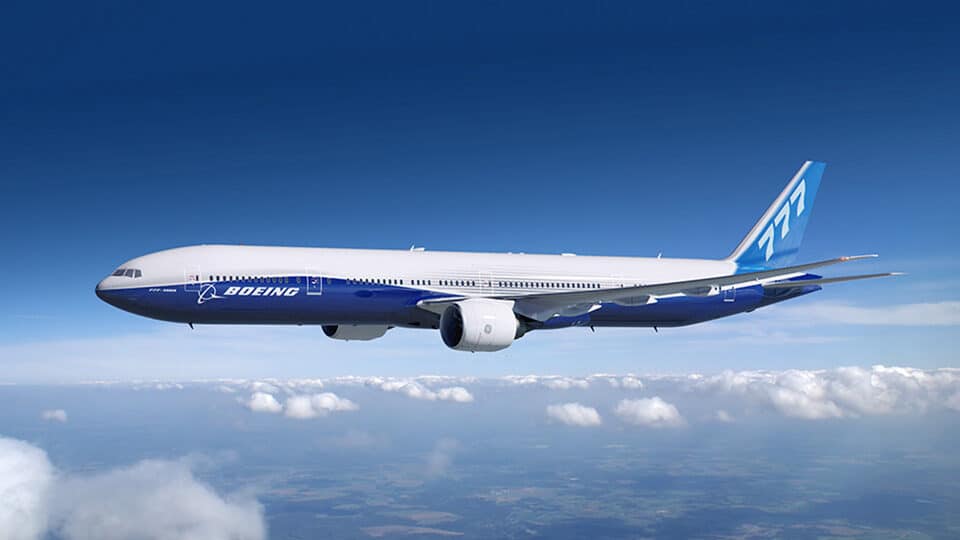
The 777 is the world’s largest twinjet and the most-built widebody airliner. Over 1,772 delivered to more than 60 customers worldwide.
But here’s what operators need to understand. The passenger 777 is effectively done.
The final 777-300ER delivered in 2024. Only five orders remain on the books, and those look unlikely to close. What’s left is the 777F freighter, which continues production until new ICAO emissions regulations force a shutdown at the end of 2027.
For cargo operators, the 777F remains the gold standard in the heavy widebody freighter segment. 102 tonnes of payload. Over 4,900 nautical miles of range. FedEx, Emirates SkyCargo, and Qatar Airways Cargo built their long-haul networks around this aircraft.
777-200LR
The longest-range 777 variant. Seats 301 passengers over 8,555 nautical miles.
Production ended years ago, but the aircraft remains in service with operators needing maximum range capability.
777-300ER
The workhorse of the 777 family. 396 passengers in two classes with 7,370 nautical miles of range.
Emirates operates the largest fleet with over 130 aircraft. The 777-300ER dominated the long-haul market before the 787 and A350 arrived with better fuel economics.
777F
The freighter variant carries 102 tonnes over 4,900 nautical miles.
Boeing delivered 29 777F freighters through October 2025 with 56 remaining in the backlog. Production ends in 2027 due to emissions compliance requirements.
| 777 Model | Length | Capacity | Range | Status |
|---|---|---|---|---|
| 777-200LR | 63.7 m | 301 pax | 8,555 nm | Out of production |
| 777-300ER | 73.9 m | 396 pax | 7,370 nm | Final deliveries 2024 |
| 777F | 63.7 m | 102 tonnes | 4,900 nm | Production ends 2027 |
777X Family
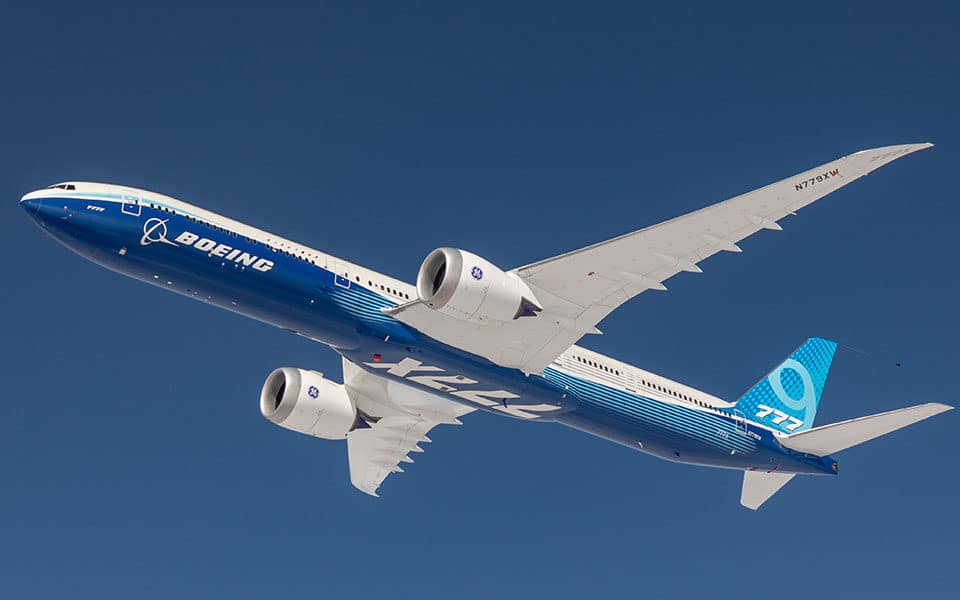
Let’s be honest. The 777X program has been a disaster.
Originally planned for 2020 entry into service, the aircraft won’t deliver until 2027 at the earliest. That’s seven years behind schedule. Boeing has taken $4.9 billion in charges related to the delays.
The problems started with an uncommanded pitch event during 2020 flight testing. Then came a structural crack in the thrust link connecting engine to wing in August 2024. Flight testing stopped for five months while Boeing made repairs.
But airlines keep ordering.
As of October 2025, Boeing holds 565 orders for the 777X family from 12 customers. Emirates alone ordered 270 aircraft. The demand exists. Boeing has to get through certification.
The FAA cleared Boeing to begin Phase 3 of Type Inspection Authorization testing in November 2025. This is the most challenging certification phase, involving rigorous inspections and real-world testing under close FAA supervision.
777-8
The long-range variant seats 384 passengers over 8,745 nautical miles.
This aircraft won’t enter service until at least 2030. Boeing is focusing all certification efforts on the 777-9 first.
777-9
The high-capacity variant. 426 passengers with 7,285 nautical miles of range.
The 777-9 features a 71.8-meter wingspan, the longest of any commercial aircraft. Those folding wingtips retract on the ground to fit standard 777 gates. The first commercial aircraft to require “wingtip controls” in the cockpit.
GE9X engines power the aircraft. These are the largest commercial jet engines ever built. They promise fuel efficiency improvements over the current 777 generation.
Emirates President Tim Clark was “a little bit miffed” when Boeing announced the latest delay to 2027. His airline has 270 aircraft on order.
777-8F
The freighter variant offers 112 tonnes of payload with approximately 4,410 nautical miles of range.
Boeing began production in mid-2025 at its Everett facility. Qatar Airways launched the program as the lead customer with 34 orders. Lufthansa Cargo, Cargolux, and Silk Way West also placed orders.
Deliveries won’t start until 2028.
| 777X Model | Length | Capacity | Range | Status |
|---|---|---|---|---|
| 777-8 | 69.8 m | 384 pax | 8,745 nm | Service entry 2030+ |
| 777-9 | 76.7 m | 426 pax | 7,285 nm | First delivery 2027 |
| 777-8F | 69.8 m | 112 tonnes | 4,410 nm | First delivery 2028 |
767 Family
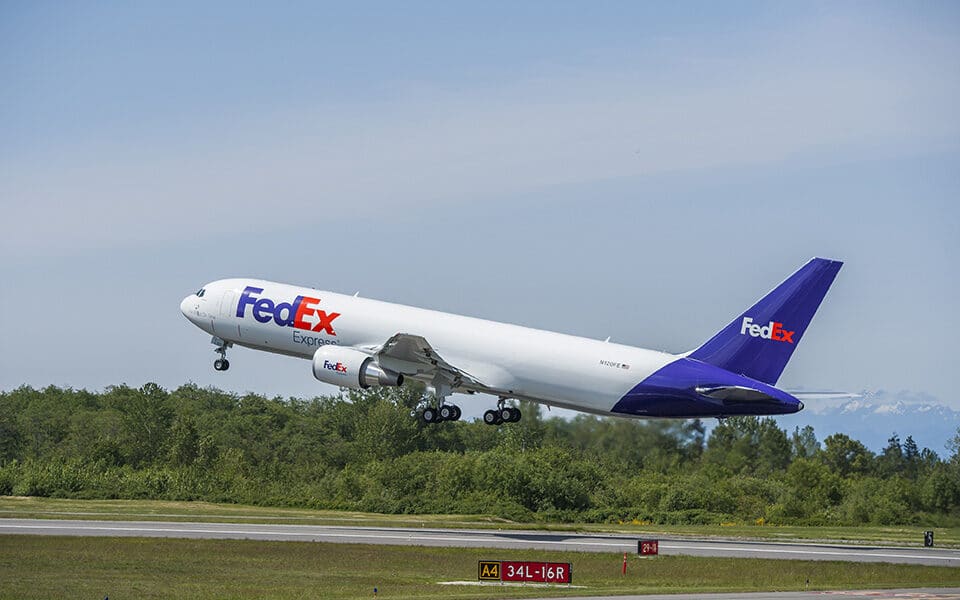
The 767 tells an interesting story. The passenger version ended production in 2014. But the freighter keeps selling.
FedEx, UPS, DHL, and Amazon Air built their cargo networks around the 767-300F. The aircraft hits the sweet spot between narrowbody converted freighters and the larger 777F.
But time is running out.
New ICAO emissions regulations take effect in 2028. The 767-300F won’t comply. Production ends in 2027 once current orders are fulfilled.
Boeing delivered 10 767Fs in the first three quarters of 2025. The remaining backlog includes orders from FedEx and UPS.
The 767-2C continues production as the basis for the KC-46A Pegasus tanker. The US Air Force has 60 remaining on order. Israel ordered four. India appears set to order six.
767-300F
The production freighter. 52.7 tonnes of payload with 3,255 nautical miles of range.
The reliable CF6 engines and straightforward maintenance made this the workhorse of regional cargo operations for three decades.
| 767 Model | Length | Capacity | Range | Status |
|---|---|---|---|---|
| 767-300F | 54.9 m | 52.7 tonnes | 3,255 nm | Production ends 2027 |
| 767-2C (KC-46) | 48.5 m | Military tanker | N/A | In production |
Boeing Production and Backlog 2025
The numbers show a company in recovery mode.
| Aircraft Family | Total Orders | Deliveries | Backlog |
|---|---|---|---|
| 737 | 17,072 | 12,295 | 4,777 |
| 767 | 1,345 | 1,260 | 85 |
| 777/777X | 2,396 | 1,772 | 521 |
| 787 | 2,277 | 1,229 | 993 |
Boeing’s backlog represents approximately 11.1 years of production at current rates. That provides visibility for fleet planning, even if delivery slots continue shifting.
For a complete list of companies building aircraft globally, see our aircraft manufacturers directory.
Which Boeing Aircraft Fits Your Operation?
Fleet decisions come down to route economics and operational requirements. Here’s how operators typically evaluate Boeing options.
Short to medium-haul with 140-230 passengers
The 737 MAX family dominates this segment. The MAX 8 offers the best balance of capacity and range for most operators. Wait for MAX 7 or MAX 10 if you need the smaller or larger variants.
Medium to long-haul with 240-340 passengers
The 787 Dreamliner delivers industry-leading fuel efficiency with passenger comfort that generates loyalty. The 787-9 hits the sweet spot for most long-haul operations.
Long-haul high-density with 380+ passengers
The 777X promises unmatched capacity on high-demand routes. If you placed early orders and your delivery schedule works, the 777-9 will transform your long-haul economics. If you need aircraft now, the A350 delivers today.
Heavy cargo operations
The 777F remains the benchmark for long-haul freight until the 777-8F arrives in 2028. For regional cargo, the 767-300F serves well but production ends in 2027.
Boeing 2026 Production Forecast
| Aircraft | 2026 Forecast | Monthly Rate | Notes |
|---|---|---|---|
| 737 MAX | 504-564 | 42-47/month | Rate increase mid-year expected |
| 787 Dreamliner | 96-120 | 8-10/month | Target 10/month by Q4 2026 |
| 777/777F | 36-40 | 3/month | Final freighter deliveries |
| 767 | 24-30 | 2-3/month | Final production year |
| 777X | 0 | N/A | Certification testing continues |
| MAX 7/MAX 10 | First deliveries | TBD | Certification expected H1 2026 |
| TOTAL | 660-750 | – | vs. 806 peak in 2018 |
Here’s what operators should expect from Boeing production next year.
737 MAX: 504-564 aircraft
Boeing plans to produce 42 aircraft per month at the start of 2026. If the company achieves one additional rate increase mid-year to 47 per month, total production reaches the higher end of this range. Some reports suggest production could reach 53 aircraft per month by late 2026 if supply chains cooperate.
787 Dreamliner: 96-120 aircraft
The target is 10 aircraft per month by the end of 2026. Achieving that rate for the full year requires faster-than-expected supply chain recovery. Seats remain the primary constraint. Realistic expectation is 8-9 monthly through mid-year, ramping to 10 by Q4.
777/777F: 36-40 aircraft
Production holds steady at 3 aircraft per month. Focus shifts to delivering the final 777F freighters before emissions compliance deadlines. No passenger 777 deliveries expected.
767: 24-30 aircraft
The final production year before the 767-300F line closes. Boeing will push to deliver remaining backlog to FedEx and UPS. KC-46 production continues separately.
777X: 0 aircraft
Certification testing continues through 2026. First delivery to Lufthansa expected in 2027. The 26 aircraft already built will begin flowing to customers once approval is received.
737 MAX 7 and MAX 10: First deliveries mid-to-late 2026
The engine anti-ice fix is designed. Boeing is working with the FAA on the certification path. Approval expected in the first half of 2026, with deliveries starting shortly after.
Total 2026 Forecast: 660-750 commercial aircraft
This would represent a significant improvement from 2025 deliveries. Boeing’s historical peak was 806 aircraft in 2018. Full recovery to pre-crisis levels remains several years away.
FAQ
How many Boeing aircraft fly worldwide?
More than 12,000 Boeing 737s have been delivered, making it the most-built commercial aircraft until the Airbus A320 passed it in September 2025. Add the 787, 777, and 767 fleets and Boeing aircraft in service exceed 15,000 units globally.
What happened to the 737 MAX?
Two fatal crashes in 2018 and 2019 killed 346 people due to flaws in the MCAS flight control system. A worldwide grounding lasted from March 2019 to November 2020. Boeing paid over $2.5 billion in settlements. A door plug incident in January 2024 led to additional FAA scrutiny and production caps.
Which Boeing aircraft flies the farthest?
The 777-200LR holds the record at 8,555 nautical miles. Among current production aircraft, the 787-9 reaches 7,635 nautical miles. The upcoming 777-8 will fly 8,745 nautical miles when it enters service after 2030.
When will the 777X deliver?
Boeing expects 2027 for the first 777-9 delivery to Lufthansa. The 777-8 passenger variant won’t enter service until at least 2030. The 777-8F freighter is scheduled for 2028.
What engines power Boeing aircraft?
Engine options vary by family:
737 MAX: CFM LEAP-1B exclusively
787 Dreamliner: General Electric GEnx-1B or Rolls-Royce Trent 1000
777: GE90 (classics), GE90-115B (current production)
777X: General Electric GE9X
767: General Electric CF6 or Pratt & Whitney PW4000
How many passengers does the 737 MAX 10 hold?
Up to 230 passengers in a high-density configuration. Typical two-class layouts seat 188-204 passengers.
Which airlines operate the most Boeing aircraft?
American Airlines operates the largest Boeing fleet with over 900 aircraft including 737s, 777s, and 787s. Southwest Airlines operates exclusively Boeing with over 800 737s. United Airlines and Delta Air Lines also maintain significant Boeing fleets.
The Bottom Line on Boeing Aircraft
Boeing aircraft continue to dominate narrowbody and widebody segments despite years of challenges. The 737 MAX backlog of nearly 5,000 aircraft demonstrates continued market confidence. The 787 Dreamliner remains the best-selling widebody of all time.
The path forward requires execution. Production stability. Certification completion for the MAX 7, MAX 10, and 777X. Quality improvements that rebuild trust with regulators and customers.
For fleet planners, the choice between Boeing and Airbus often comes down to delivery availability. Boeing’s backlog stretches 11 years. Airbus faces similar constraints. Airlines voting with their purchase orders continue betting on both manufacturers.
2026 will test whether Boeing’s recovery is real.
Authors
-
Radu Balas: Author
Pioneering the intersection of technology and aviation, Radu transforms complex industry insights into actionable intelligence. With a decade of aerospace experience, he's not just observing the industry—he's actively shaping its future narrative through The Flying Engineer.
View all posts Founder
-
Cristina Danilet: Reviewer
A meticulous selector of top-tier aviation services, Cristina acts as the critical filter between exceptional companies and industry professionals. Her keen eye ensures that only the most innovative and reliable services find a home on The Flying Engineer platform.
View all posts Marketing Manager
-
Marius Stefan: Editor
The creative force behind The Flying Engineer's digital landscape, meticulously crafting the website's structure, navigation, and user experience. He ensures that every click, scroll, and interaction tells a compelling story about aviation, making complex information intuitive and engaging.
View all posts Digital Design Strategist

